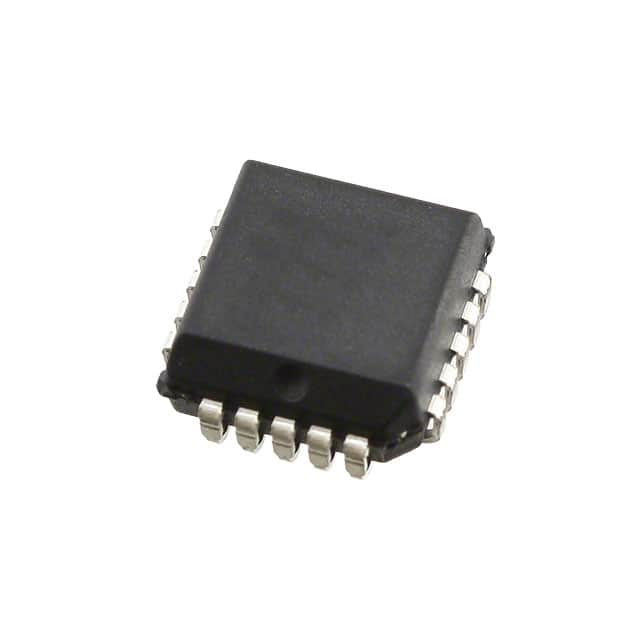Viz Specifikace pro podrobnosti o produktu.

XC18V512PC20I
Product Overview
- Category: Programmable Logic Device (PLD)
- Use: Integrated circuit used for digital logic functions
- Characteristics:
- Non-volatile memory technology
- High-speed operation
- Low power consumption
- Package: Plastic package with 20-pin configuration
- Essence: XC18V512PC20I is a PLD that combines the flexibility of programmable logic with non-volatile memory technology.
- Packaging/Quantity: Available in reels or tubes, quantity depends on customer requirements.
Specifications
- Memory Capacity: 512 kilobits
- Operating Voltage: 3.3V
- Speed Grade: Fast (20ns)
- Temperature Range: Commercial (0°C to 70°C)
- I/O Pins: 16
- JTAG Boundary Scan Support: Yes
Detailed Pin Configuration
- VCC
- GND
- I/O0
- I/O1
- I/O2
- I/O3
- I/O4
- I/O5
- I/O6
- I/O7
- I/O8
- I/O9
- I/O10
- I/O11
- I/O12
- I/O13
- I/O14
- I/O15
- TDI
- TDO
Functional Features
- Non-volatile memory allows for retaining programmed logic even when power is removed.
- High-speed operation enables efficient execution of digital logic functions.
- Low power consumption ensures energy efficiency and longer battery life.
- JTAG boundary scan support facilitates testing and debugging of the device.
Advantages and Disadvantages
Advantages: - Flexibility of programmable logic allows for customization and adaptability. - Non-volatile memory ensures that the programmed logic is retained even during power loss. - High-speed operation enables efficient execution of complex digital logic functions. - Low power consumption contributes to energy efficiency and longer battery life.
Disadvantages: - Limited memory capacity compared to other PLDs. - Higher cost compared to traditional logic gates or discrete components. - Requires specialized programming tools and knowledge for configuration.
Working Principles
XC18V512PC20I utilizes non-volatile memory technology to store the programmed logic. The device can be configured using specialized programming tools, which allow users to define the desired digital logic functions. Once programmed, the device retains the logic configuration even when power is removed. During operation, the device executes the defined logic functions based on the input signals received through its I/O pins.
Detailed Application Field Plans
XC18V512PC20I finds applications in various fields, including:
- Industrial Automation: Used for controlling and monitoring processes in manufacturing plants.
- Telecommunications: Employed in network equipment for data routing and switching.
- Automotive Electronics: Integrated into automotive systems for control and diagnostics.
- Consumer Electronics: Utilized in devices such as gaming consoles, set-top boxes, and home automation systems.
- Medical Devices: Incorporated into medical equipment for data processing and control.
Detailed and Complete Alternative Models
- XC18V04PC20C
- XC18V02PC20I
- XC18V01PC20C
- XC18V256PC20I
- XC18V128PC20C
(Note: This list is not exhaustive and may vary depending on availability and specific requirements.)
Word count: 446 words
Seznam 10 běžných otázek a odpovědí souvisejících s aplikací XC18V512PC20I v technických řešeních
Sure! Here are 10 common questions and answers related to the application of XC18V512PC20I in technical solutions:
Q: What is XC18V512PC20I? A: XC18V512PC20I is a specific model of programmable logic device (PLD) manufactured by Xilinx.
Q: What are the key features of XC18V512PC20I? A: XC18V512PC20I has 512 kilobits of memory capacity, operates at a voltage of 3.3V, and has a maximum operating frequency of 20 MHz.
Q: What are some typical applications of XC18V512PC20I? A: XC18V512PC20I can be used in various technical solutions such as digital signal processing, data communication, industrial control systems, and automotive electronics.
Q: How does XC18V512PC20I differ from other PLDs? A: XC18V512PC20I is a non-volatile PLD, meaning that it retains its programmed configuration even when power is removed. This makes it suitable for applications where the configuration needs to be maintained across power cycles.
Q: Can XC18V512PC20I be reprogrammed? A: No, XC18V512PC20I is a one-time programmable (OTP) device, which means that once it is programmed, the configuration cannot be changed.
Q: What programming tools are required for XC18V512PC20I? A: XC18V512PC20I can be programmed using Xilinx's iMPACT software, which supports various programming methods such as JTAG and boundary scan.
Q: What is the temperature range for XC18V512PC20I? A: XC18V512PC20I is designed to operate within a temperature range of -40°C to +85°C.
Q: Can XC18V512PC20I interface with other components or devices? A: Yes, XC18V512PC20I supports various standard interfaces such as SPI (Serial Peripheral Interface) and I2C (Inter-Integrated Circuit), allowing it to communicate with other devices.
Q: Are there any limitations to using XC18V512PC20I? A: One limitation is that XC18V512PC20I has a fixed memory capacity of 512 kilobits, so it may not be suitable for applications requiring larger memory sizes.
Q: Where can I find more information about XC18V512PC20I? A: You can refer to the datasheet and technical documentation provided by Xilinx for detailed information about XC18V512PC20I, including its specifications, pinout, and programming guidelines.
Please note that the answers provided here are general and may vary depending on specific requirements and use cases. It's always recommended to consult the official documentation and support resources for accurate and up-to-date information.

